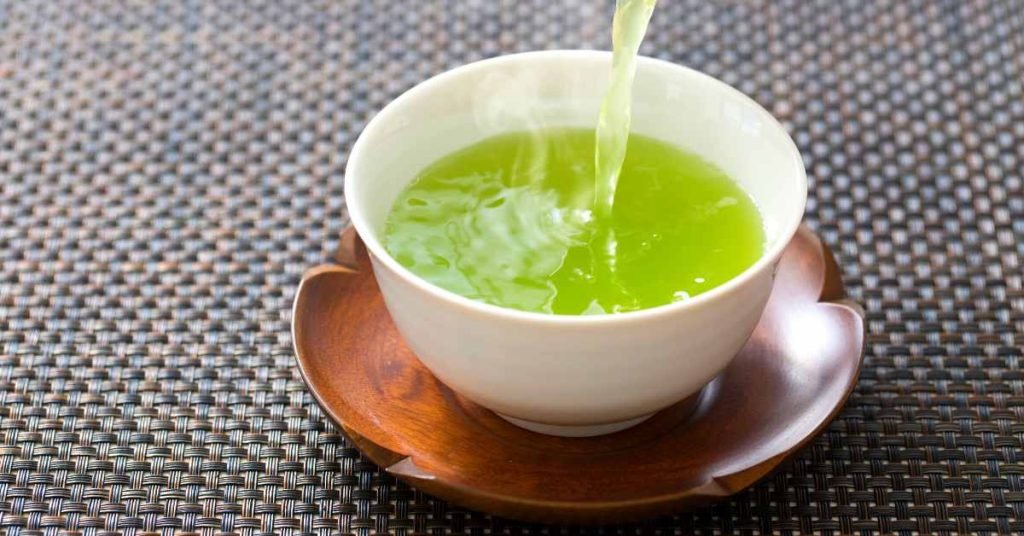It is very common in tea advertising to mention the multiple benefits of green and white teas for their high content of antioxidants, before this, you have probably ever wondered if this implies that higher oxidation teas such as oolongs or black teas may become less healthy.
All varieties of tea offer desirable properties for the organism, including those teas with higher oxidation because they achieve an interesting mixture of elements that are worth knowing and taking into account.
To delve into this topic, we invite you to stay with us in this note to know some effects that tea oxidation causes in terms of flavor and benefits.
What Is Tea Oxidation?

First of all, let’s talk about what oxidation is all about. We have probably seen it when cutting an apple and observing how it turns brown.
In the case of Camellia sinensis leaves, this is desirable to achieve different flavor profiles, aromas, textures, and properties.
In short, these changes are due to the interaction of the plant’s antioxidants with the oxygen in the air, which transforms these molecules into different variants depending on the degree of oxidation of each tea.
Therefore, each specific transformation gives the tea chemistry that translates into aromatic notes and special benefits.
We will now analyze 5 effects that these chemical changes have on the sensory perception of a good tea.
1. Transformation in Aromatic Notes
Sorting the types of tea by the level of oxidation, we should start with green teas, which are characterized by no oxidation, with herbal flavors, cooked vegetables, and in other cases fresh vegetables.
Moving on, we find white teas, which are in fact barely oxidized. Known for their minimalist processing that maintains their natural load of polyphenols.
Increasing Oxidation

The next thing we come across in terms of oxidation level is the famous oolongs or also known as semi-oxidized teas.
These teas can address low oxidation levels, with transformations of at least 20% of their original antioxidants upwards, so they are more oxidized than white teas.
This leads to fresh, floral citrus or white flower aromas, cooked vegetables, and lightly grilled vegetables.
As the degree of oxidation intensifies over 50% we can find more richness in nuances, with aromas of peach, and tropical fruits, and can reach this level of oxidation to percentages close to 80% inclusive.
Tea With the Highest Level of Oxidation
At the end of this tour, we come across the so-called high oxidation teas. These are mainly black teas with transformation percentages above 80%.
This leads to the appearance of fruity notes such as grapes, raisins, and plums, along with other types of sweet notes such as caramel, malt, and roasted vegetables, and even toasted aromas such as cocoa or nuts can be found.
Have you ever been able to perceive these aromas in your tea?
2. Changes in the Tactile Sensations in the Mouth

As you move along this spectrum of oxidation, some mouthfeel sensations experienced by touch also begin to increase.
Such as astringency or dryness in the mouth after drinking tea, which is usually intensified by high levels of oxidation such as those of black tea.
High Oxidation of Tea Activates Your Tongue
Increased oxidation gives a greater perception of weight to the tea liquor, giving what is called a “fuller body” in relation to less oxidized teas.
Also, with oxidation, it is plausible to experience an increase in the level of itchiness on the tip of the tongue with intense black teas.
3. Changes in the Perception of Basic Tastes
We should consider that increasing oxidation also affects our perception of basic tastes in the mouth.

Especially the sweet, bitter, and sour tastes are the ones that increase their notoriety with an increase in the oxidation of the tea.
More Oxidation, Sweeter Tea
What we notice most quickly in oolongs is an increase in sweetness, but with a very low perception of the bitter taste.
Whereas, in black teas, although the sweetness is intensified, it is more difficult to perceive because of the increase in acid and bitter tastes present in teas that exceed 80% oxidation.
4. More Intense Aromas
When tasting your next black tea, you will be able to easily notice its aroma when infused, thanks to a greater intensity due to its high oxidation.
This is due to the characteristics of the pigment and fatty acid compounds present in the leaves, giving rise to very aromatic volatile compounds.
5. Change in the Types of Antioxidants
A widespread myth is that with oxidation, antioxidants are lost, but the above background shows that this idea is erroneous.

The progressive changes that the matrix of tea undergoes, obtain more complex antioxidants at the molecular level and with diverse effects on health.
Take Note
Theaflavins for example, present in white teas, oolongs, and black teas, help to strengthen the cardiovascular system in a similar way to what happens with the catechins of white and green teas.
They are also good for reducing stomach ulcers and help reduce inflammation of muscle tissue, which is beneficial for post-exercise recovery and has been shown to slow the spread of some types of cancer cells.
Antioxidants in High Oxidation Teas
On the other hand, the tearubigins that are generated mainly at high levels of oxidation, i.e. already in black teas, have a great capacity to counteract free radicals, preventing premature cellular aging, besides helping to relieve stomach pains and irritation, being in turn very well known its effect in helping to counteract and treat diarrhea.
An additional effect that you surely think you know?
As a bonus, let’s talk about another deep-rooted myth. It is generally thought that black teas have intrinsically more caffeine than other types of teas because they are much more oxidized teas.

For the same reason, it is necessary to clarify in the first place that all teas have caffeine in their leaves at very similar levels, however, what happens with their caffeine release in the cup when you infuse them is different…
In the case of highly oxidized teas such as black teas, the more powerful activation that you perceive is the result of factors associated with their production, such as the fact that they have more intense curling processes than other types to shape them, which releases much of their load of activating components in the form of oils that adhere to the leaves during drying.
Extra Details In Addition to Tea Oxidation
Also, many oxidized teas, such as black teas, have leaves generally arranged in smaller sizes, this is achieved by a high extraction of the components to prepare the infusion in hot water; which usually has temperatures above 85 ° C, requiring in turn longer infusion times to achieve optimal preparation.
In case it has not been clear with the above factors, in short, when infusing teas of greater oxidation, greater extraction of various components of caffeine and others in the cup served is effectively achieved, but it does not correspond to a higher caffeine presence persé in the leaves of this typology.
We hope you have enjoyed this article. If so, we invite you to follow our content to continue learning about the surprising world of tea.
MEDICAL DISCLAIMER
Itsnevernotteatime.com cannot and does not contain medical/health advice. The medical/health information is provided for general and educational purposes only and is not a substitute for professional advice.




